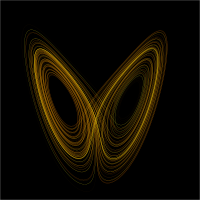
Photo from wikipedia
Excited-state absorption (ESA) spectra of π-conjugated compounds are frequently calculated by (quadratic response) time-dependent density functional theory, (QR) TD-DFT, often giving a reasonable representation of the experimental results despite the… Click to show full abstract
Excited-state absorption (ESA) spectra of π-conjugated compounds are frequently calculated by (quadratic response) time-dependent density functional theory, (QR) TD-DFT, often giving a reasonable representation of the experimental results despite the (known) incomplete electronic description. To investigate whether this is inherent to the method, we calculate here the ESA spectra of small-to-medium-sized oligophenylenevinylenes (nPV) and oligothiophenes (nT) using QR TD-DFT as well as CASPT2 based on CASSCF geometries. CASPT2 gives indeed a reliable, theoretically correct description of the ESA features for all compounds; the computational effort can be reduced without significant loss of accuracy using TD-DFT geometries. QR TD-DFT, based on BHandHLYP and CAM-/B3LYP functionals, fails on short nTs but provides a reasonable description for spectral positions of nPVs and long nTs. The failure on short nTs is, however, only partly due to the incomplete configuration description but, in particular, related to an improper MO description, resulting in an asymmetric energy spacing of the occupied vs unoccupied MOs in the DFT scheme. Longer nTs, on the other side, adapt approximately the MO scheme for alternant hydrocarbons just like in nPVs, while contributions by two triplet excitations combined to a singlet (which inhibits an accurate treatment of polyenes with standard TD-DFT) do not play a relevant role in the current case. For such "well-behaved" systems, a reasonable representation of ESA spectra is found at the QR TD-DFT level due to the rather small energy shifts when including higher-order excitations.
Journal Title: Journal of chemical theory and computation
Year Published: 2022
Link to full text (if available)
Share on Social Media: Sign Up to like & get
recommendations!